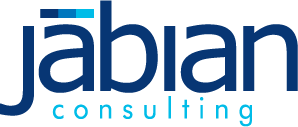How did STE(A)M Truck come about?
It’s slightly confusing but the nonprofit is called Community Guilds and STE(A)M Truck is one of our programs. I founded Community Guilds after twenty years of school reform. My epiphany was to launch an organization that strives to change public schools with the idea that it takes a village to do so. But public schools are poorly designed to tap into the local expertise that surrounds them.
So Community Guilds has two programs: a high school apprenticeship program to offer students a way to learn and tap into local experts and businesses before graduating. The second program, STE(A)M Truck, is a mobile innovation lab. We realized that elementary and middle school kids needed a solution that brings in the broader community and meets them where they are. Maker Spaces are innovation labs that are already in a lot of private schools but to help close the opportunity gaps we put the Maker Spaces on wheels…and STE(A)M Truck was born.
And it was a great concept on paper, but as a new nonprofit we didn’t have much traction and less funding. That changed about three years ago when we borrowed a truck, some tools, and technology and put it in front of the community at the Atlanta Mini Maker Faire. Fortunately, The Arthur M Blank Foundation and other donors stepped in to help buy the first truck. Today, we have five trucks filled with high tech tools and equipment. But our goal is to have nine vehicles that serve 4,000 students and 200 teachers annually by 2019.
How does the program work?
Good question. Now that we had the stuff, we had to decide what to do with it that would have the most impact. It’s been a steady iteration and evolution. The original program was a “pull out program” for 20 days and was an intervention for selected students to work with building skills such as social and emotional learning, and to give them an opportunity to showcase strengths not grown behind a desk.
Now the primary focus is to work with schools and teachers so that once we drive away, the opportunity to positively disrupt doesn’t leave too. In 20 days, we work with teachers and their classes, building their capacity to do the work once we are gone.
We are not a volunteer organization because of the commitment needed, although we do offer 2-day builds for volunteers seeking opportunities. We have nine paid staff who make up three different types: maker-mentors who use tools and make things; professional artists to ensure we focus on creativity and innovation; and STEM designers who helps the staff create good approaches to the material and act as a support for classroom teachers. always an experienced educator. To increase impact, we keep a ratio of one adult to every five kids.
The Impact 10 Grant is helping you purchase solar panels for your newest trailer. How long have you been looking at solar energy?
One of the realities of going to a school is that we take up a lot of power and oftentimes we’re sourcing that power directly from the school itself which are rarely able to support our power needs. We’ve caused one or two black-outs. we needed a different power solution. We could’ve bought generators but we wanted to figure out a way to do things solar-powered.
The broader implication of solar energy is that it’s a live, built-in educational component to the 20-day program. We can build something using renewable energy and the kids get to understand where power comes from and not to take it for granted. We had to add new components to the curriculum to cover solar power but thankfully there were already a lot of resources out there aimed at elementary and middle school students.
We got the trailer about two months ago and are now on the cusp of getting more support from solar companies here in Georgia since we’ve already received one grant through Jabian Cares’ Impact 10. Many power companies are interested in working with k-12 so we’re in a unique position to receive funding because we are mobile, we interact directly with the students and schools, and can reach more people. We expect the Impact grant to be a catalyst for future partnerships.
How do you choose the schools you go to?
We focus on Metro Atlanta elementary and middle schools. We look for neighborhoods and schools that might not otherwise have access to high tech tools and technologies. Our mission is to close opportunity gaps too often predicted by zip code, and unfortunately, Title 1 schools are often determined by their zip code.
When we first started, we allowed the principals and teachers to choose the students to participate, but we were surprised that the students chosen were consistently male. We now require that half of the participants be female.
What’s next on the wishlist?
We need more trucks. Nine is the goal for now but it’s fairly expensive to get the vehicles up and going. It’s been pretty challenging to get vehicle donations that can immediately be retro-fitted into innovation labs. In addition, once we get the trailer, we have to outfit it with all of the tools and materials. We have amazon shopping lists that people can purchase to help support STE(A)M Truck.
We’re trying to create longer term partnerships in the community that sees the benefit of our initiative. Elementary students are the tip of the spear for workforce development and sometimes it’s already too late by the time they get to high school.
The corporate partnerships we’re looking for should align in values. If we find an organization that aligns with us, that’s worth a conversation.
